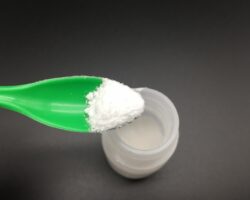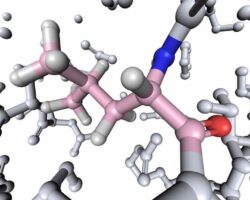
- Introduction to Cosmetic Peptides
- Benefits of Using Cosmetic Peptides
- Different Types of Cosmetic Peptides
- How Cosmetic Peptides Work on the Skin
- The Science Behind Cosmetic Peptides
- Choosing the Right Cosmetic Peptide Products
- Safety and Side Effects of Cosmetic Peptides
- Incorporating Cosmetic Peptides into Your Skincare Routine
- FAQs about Cosmetic Peptides
- Conclusion
Introduction to Cosmetic Peptides
Welcome to the fascinating world of cosmetic peptides! In this article, we will delve into the incredible benefits and science behind these amazing skincare ingredients. Whether you’re a skincare enthusiast or just curious about the latest advancements in the beauty industry, this comprehensive guide will equip you with the knowledge you need to make informed choices about incorporating cosmetic peptides into your skincare routine.
Benefits of Using Cosmetic Peptides
When it comes to skincare, we’re all searching for that holy grail ingredient that can work wonders on our skin. Look no further, as cosmetic peptides are here to revolutionize your skincare game. These powerful compounds offer a myriad of benefits, ranging from promoting collagen production to improving skin elasticity and reducing the appearance of wrinkles. With regular use, you can expect a more youthful and radiant complexion.
Different Types of Cosmetic Peptides
There is a wide range of cosmetic peptides available in the market, each with its own unique properties and benefits. From Matrixyl to Argireline, these peptides target specific skin concerns such as fine lines, sagging skin, and uneven skin tone. By understanding the different types of cosmetic peptides, you can choose the right products that address your specific skincare needs.
How Cosmetic Peptides Work on the Skin
At the molecular level, cosmetic peptides work their magic by stimulating the production of collagen and elastin in the skin. Collagen, often referred to as the building block of skin, is responsible for maintaining its firmness and elasticity. By promoting collagen synthesis, peptides help to reduce the appearance of wrinkles and improve skin texture. Additionally, they also aid in hydrating the skin and enhancing its natural barrier function, leaving you with a plump and youthful complexion.
The Science Behind Cosmetic Peptides
Behind every effective skincare ingredient lies a fascinating scientific backstory. Cosmetic peptides are no exception. These small chains of amino acids penetrate the skin’s surface, reaching the deeper layers where they signal the skin cells to produce more collagen. This cellular communication is what makes cosmetic peptides such a game-changer in the world of skincare.
Choosing the Right Cosmetic Peptide Products
When it comes to choosing the right cosmetic peptide products, it’s essential to consider factors such as your skin type, specific concerns, and ingredients that complement the peptides. Look for reputable brands that prioritize quality and efficacy. Additionally, consulting with a skincare professional or dermatologist can help you make an informed decision based on your individual needs.
Safety and Side Effects of Cosmetic Peptides
As with any skincare ingredient, safety is a top priority. Cosmetic peptides are generally considered safe for use, but it’s crucial to follow the recommended usage guidelines provided by the manufacturer. While rare, some individuals may experience mild skin irritation or allergic reactions. If you have sensitive skin, it’s advisable to perform a patch test before incorporating new peptide-based products into your routine.
Incorporating Cosmetic Peptides into Your Skincare Routine
Now that you understand the benefits and science of cosmetic peptides, it’s time to explore how to incorporate them into your skincare routine. Begin by introducing one peptide-based product at a time, allowing your skin to adjust and observe any changes. Consistency is key, so incorporate the product into your daily regimen and give it time to work its magic. Remember, results may vary, and patience is essential when it comes to achieving your desired skincare goals.
FAQs about Cosmetic Peptides
Q: Can anyone use cosmetic peptides?
A: Yes, cosmetic peptides are suitable for most skin types. However, if you have specific skin concerns or medical conditions, it’s always best to consult with a dermatologist before incorporating new products into your skincare routine.
Q: Can I use multiple peptide-based products together?
A: While it’s generally safe to use multiple peptide-based products, it’s essential to avoid overloading your skin. Start with one product and gradually introduce others to observe how your skin responds. Pay attention to any signs of irritation or sensitivity.
Q: How long does it take to see results?
A: Results may vary depending on individual factors such as skin condition, age, and consistency of product usage. Generally, it takes several weeks to notice visible improvements in skin texture and appearance.
Conclusion
In conclusion, cosmetic peptides are a game-changer in the world of skincare. With their ability to stimulate collagen production, improve skin elasticity, and reduce the signs of aging, these powerful ingredients have become a staple in many skincare routines. By understanding the different types of cosmetic peptides and choosing the right products for your needs, you can embark on a journey towards healthier, more vibrant skin. Remember, consistency and patience are key, so embrace the power of peptides and unlock the potential of your skin.
And that wraps up our comprehensive guide to exploring the world of cosmetic peptides. We hope you found this article informative and inspiring on your skincare journey. Stay tuned for more exciting insights into the ever-evolving world of beauty and skincare!









